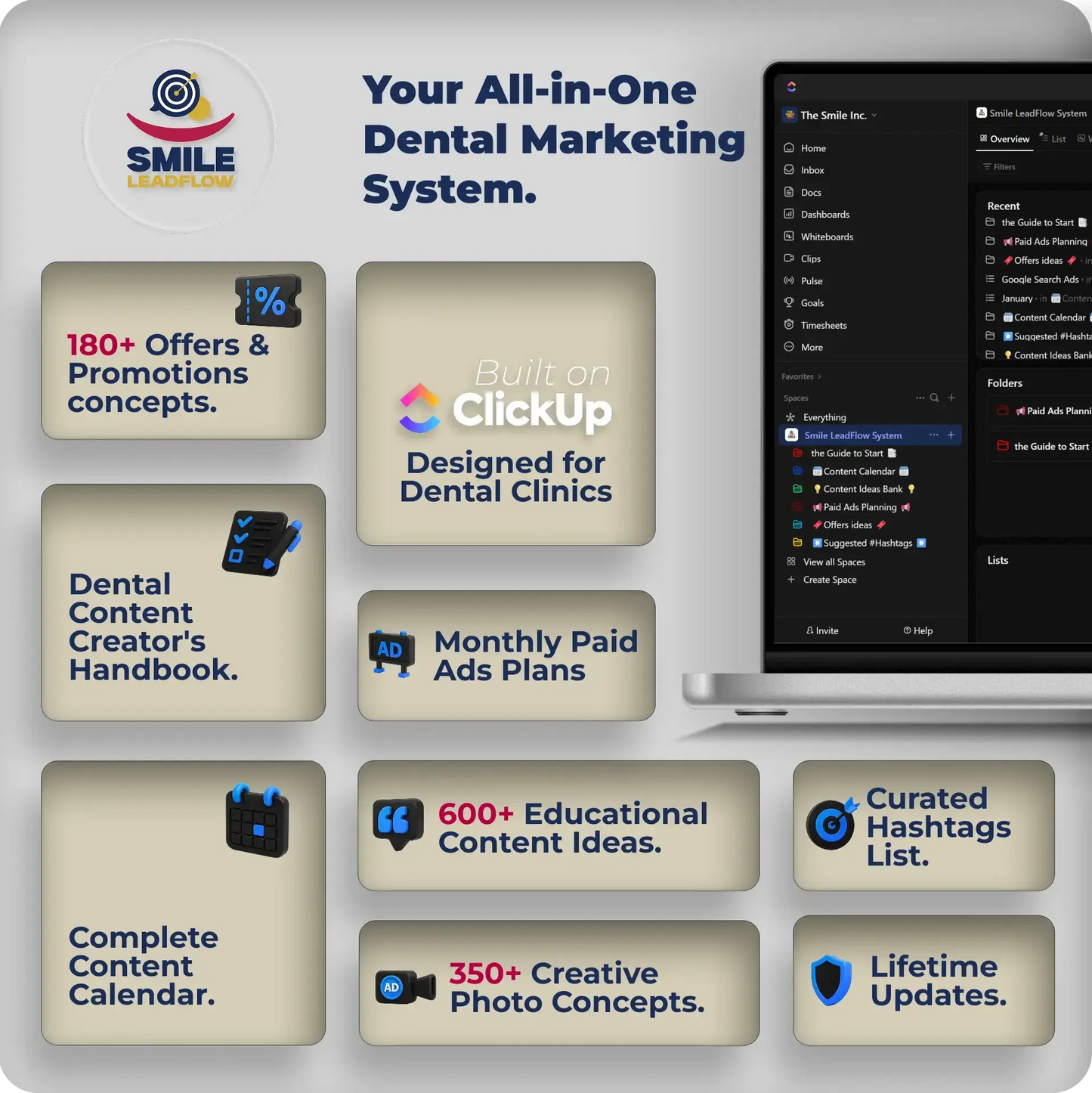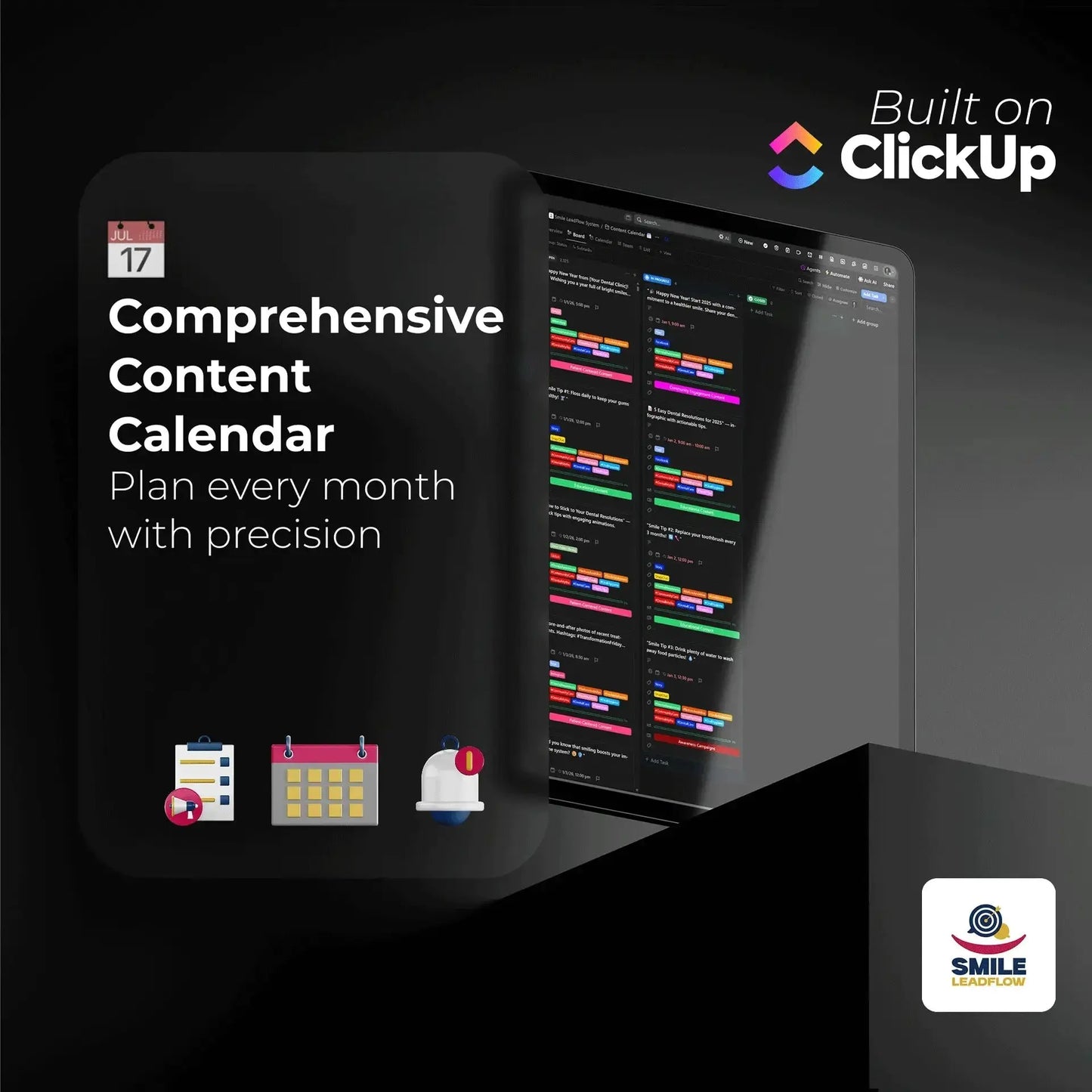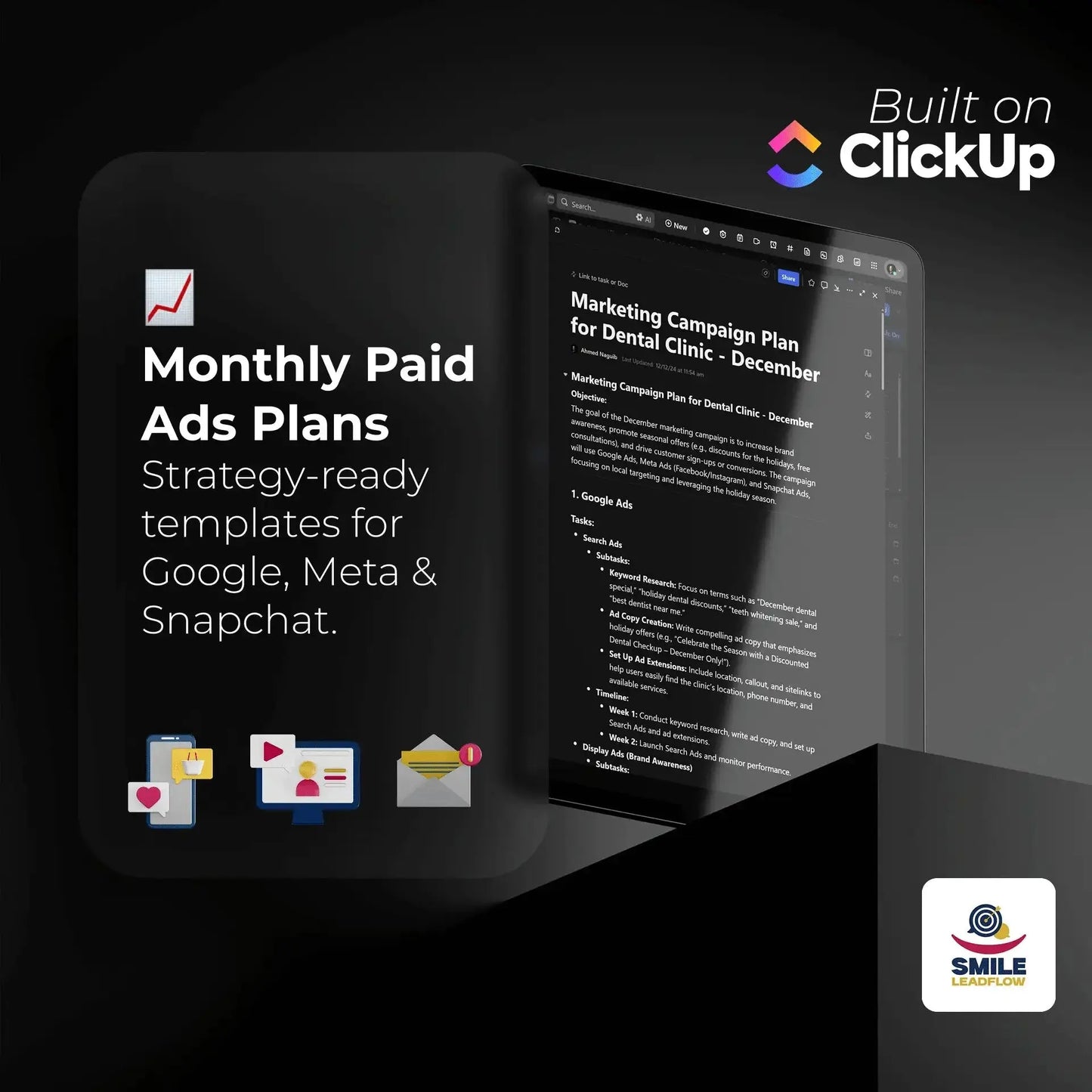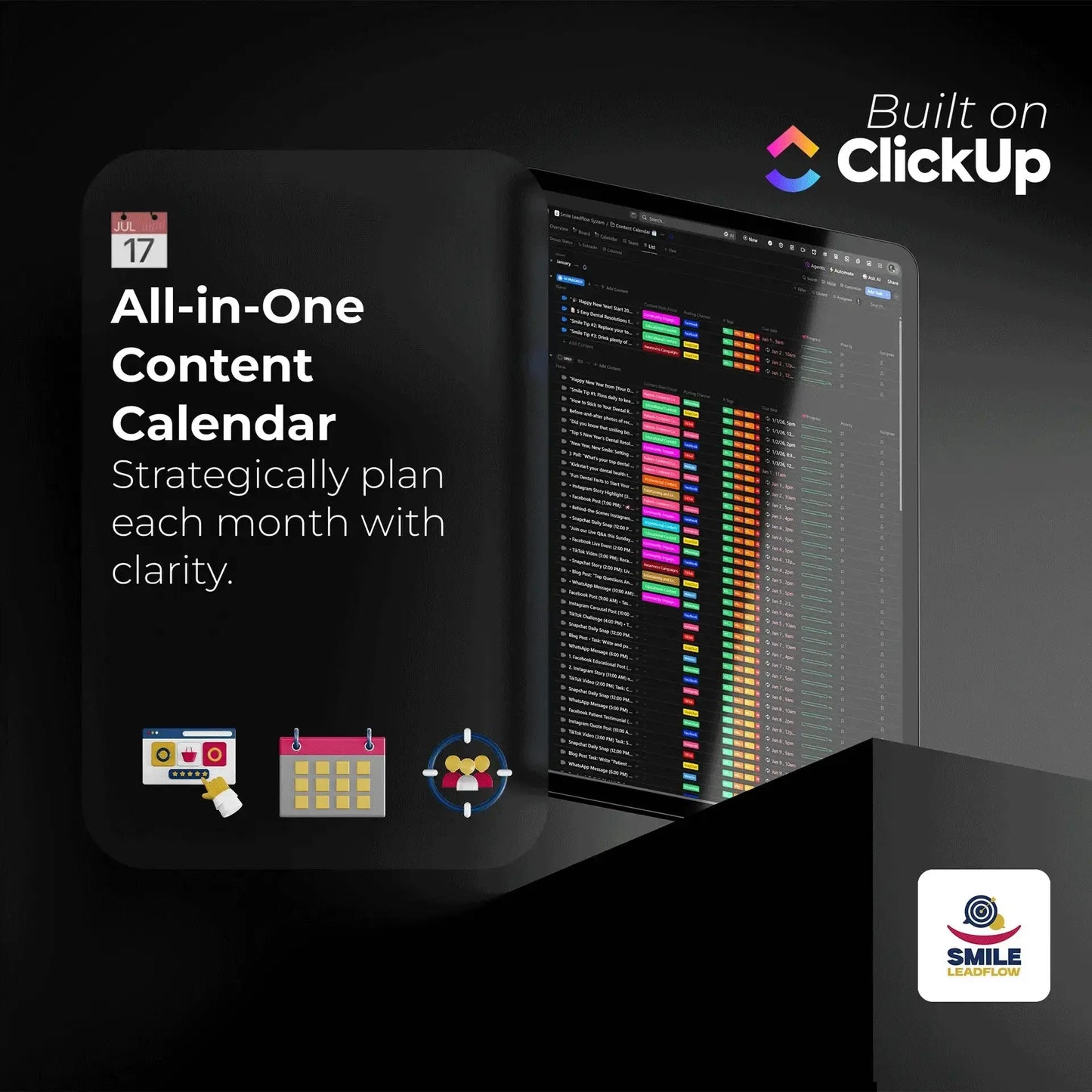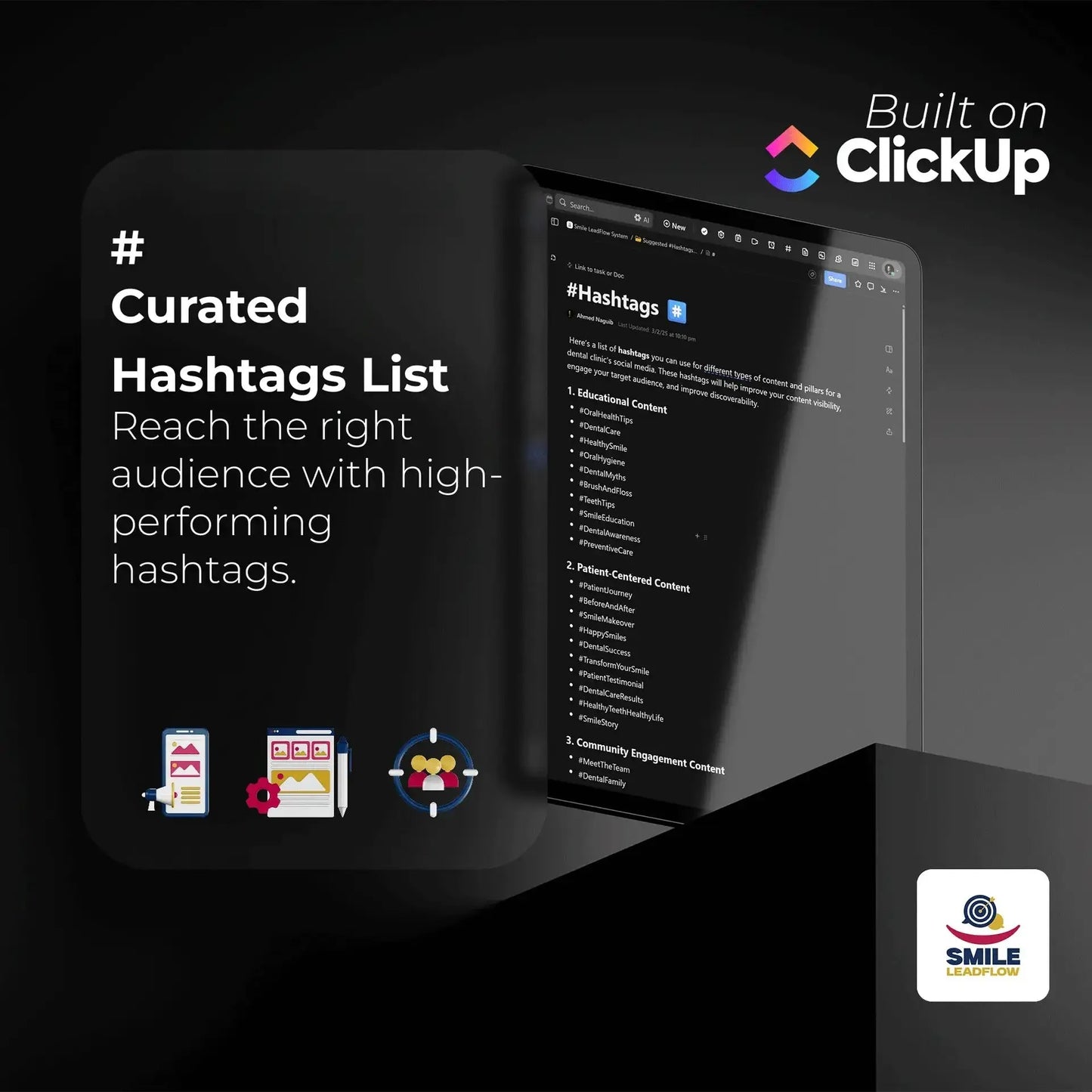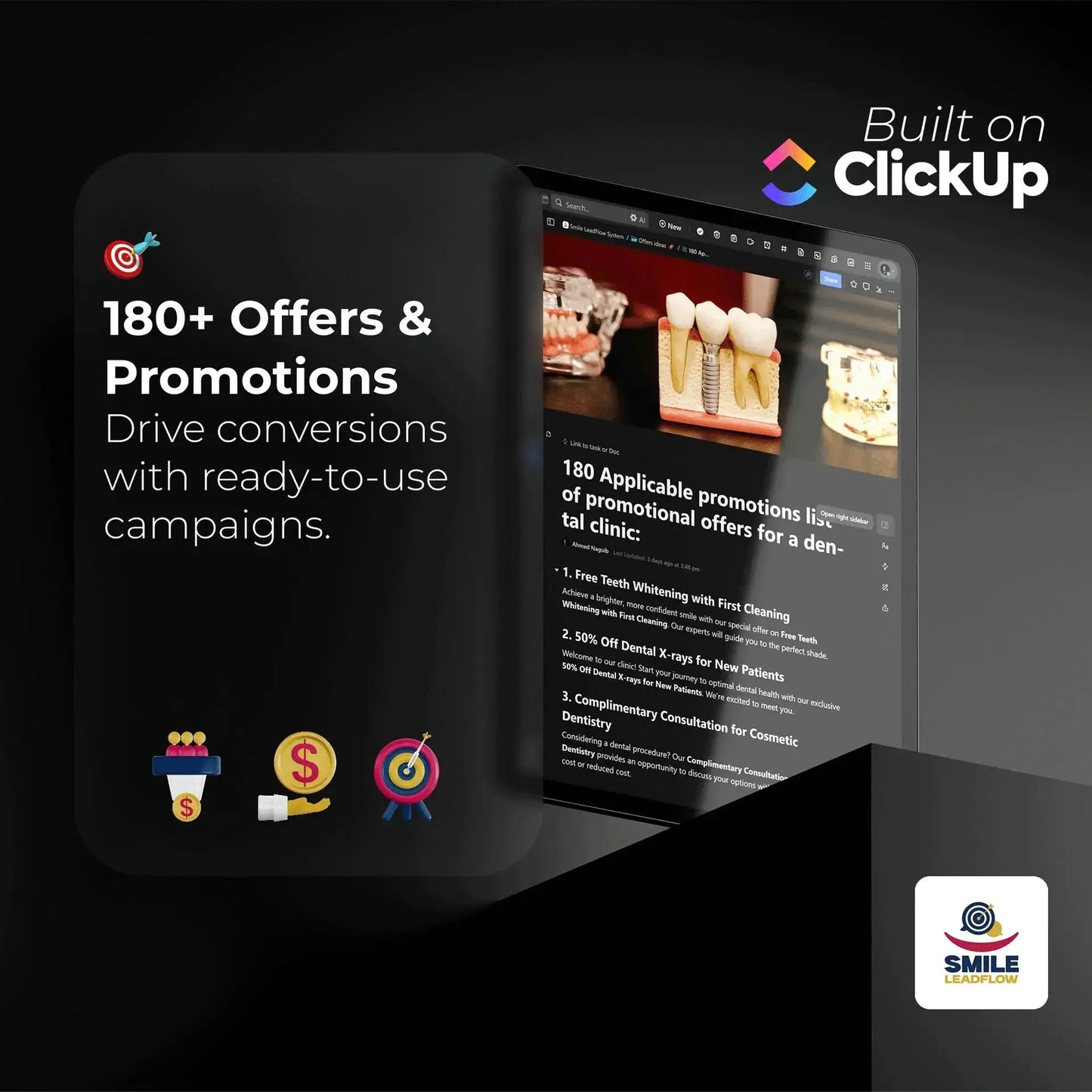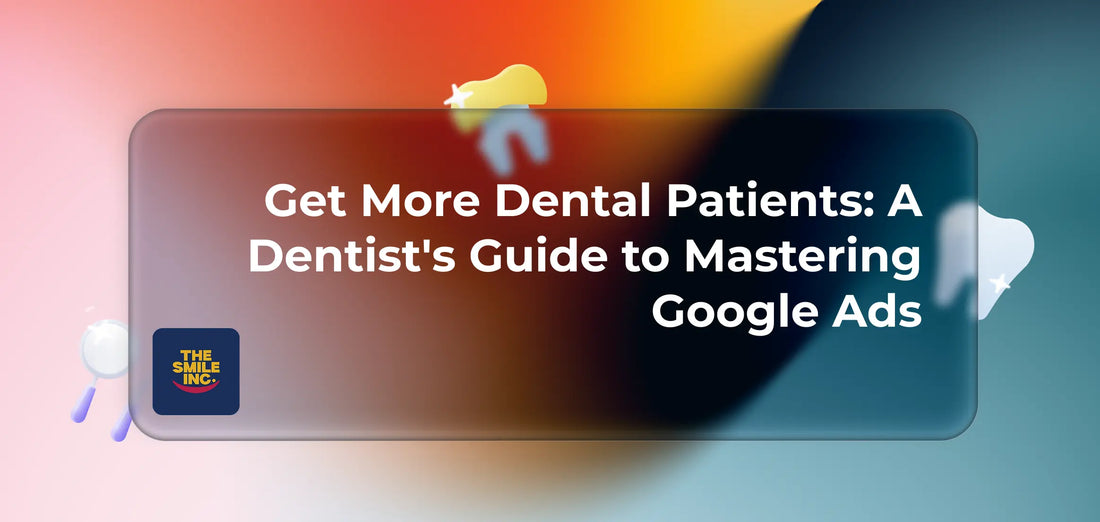
Get More Dental Patients: A Dentist's Guide to Mastering Google Ads
Ahmed NaguibShare
Juggling the demands of patient care while trying to grow your practice is a daily challenge. You’re a dental professional, an expert in oral health, but suddenly you also need to be a marketing guru. If you've ever felt the pressure to promote your dental clinic but don't know where to start, you're not alone. The world of digital marketing can feel overwhelming, but what if there was a direct way to reach potential patients right when they need you most?
Imagine a new resident in your city searching for "emergency dentist near me" after a sudden toothache. With the right strategy, your clinic can appear at the very top of their search results, offering the exact solution they need. This is the power of Google Ads.
This guide is designed specifically for dentists like you. We’ll break down the essentials of dental clinic marketing using Google Ads in a clear, friendly, and professional way—no business degree required. Let's explore how to market your dental practice effectively and fill your appointment book. 🦷
Why Google Ads Is a Game-Changer for Your Dental Practice
Google Ads is a pay-per-click (PPC) advertising platform. In simple terms, you only pay when someone is interested enough to click on your ad. For dentists, this is an incredible opportunity to get in front of people who are actively looking for dental care. When someone searches for a relevant term, Google’s algorithm decides which ads to show. If your ad is relevant, it will showcase your practice prominently.
Here’s why Google Ads is one of the most effective tools for dentists:
- 🎯 Targeted Reach: Unlike a billboard that everyone sees, Google Ads lets you target specific groups based on demographics (age, income), geographic location (your city or even a few blocks around your clinic), and—most importantly—their search intent. You connect with people actively seeking dental services.
- 📈 Measurable ROI: Forget guessing if your marketing is working. Google Ads provides detailed reports showing exactly how many people saw your ad, clicked on it, and took an action like booking an appointment. This data allows you to see your return on investment (ROI) and make smarter marketing decisions.
- ⚙️ Total Flexibility: You are in complete control of your budget. You can start small, increase your ad spend during peak seasons, or pause campaigns whenever you need to. This flexibility provides a significant edge over traditional marketing methods.
Your Step-by-Step Guide to a Winning Google Ads Campaign

Ready to get started? Follow these foundational steps to build a Google Ads campaign that helps you get more dental patients. This is dental marketing for beginners, broken down into simple, actionable tasks.
Step 1: Choose the Right Keywords
Keywords are the backbone of your campaign. They are the phrases potential patients type into Google. Choosing the right ones is crucial for connecting with the right audience.
- Keyword Research: Use a tool like Google's Keyword Planner to find terms relevant to your practice. Think like a patient! They might search for “best dentist in [your city],” “dental implants cost,” or “affordable teeth whitening near me.”
- Focus on Long-Tail Keywords: These are longer, more specific phrases like “emergency dentist open on Saturday” or “pediatric dentist that accepts Cigna.” They often have less competition and attract patients who are much closer to making a decision. This is a fundamental aspect of effective SEO for dentists.
- Use Negative Keywords: Just as important is telling Google what not to show your ads for. Add negative keywords like “free,” “cheap,” or “dental school clinic” to avoid wasting money on irrelevant clicks.
Step 2: Craft Ads That Convert
Your ad serves as your digital storefront sign, and it must be compelling enough to grab someone's attention and prompt them to click.
- Showcase Your Unique Selling Points (USPs): What sets your clinic apart? Do you offer same-day appointments, advanced sedation dentistry, or a particularly welcoming environment for anxious patients? Make these differentiators the star of your ad.
- Provide a clear call to action (CTA): Clearly state the desired action for the audience. Use strong, action-oriented phrases like “Book Your Appointment Online” or “Call Now for a Free Consultation.”
- Use Ad Extensions: These are extra snippets of information that make your ad more helpful and prominent. Add links to your services page, your phone number for easy click-to-call, or your physical address.
Step 3: Optimize Your Landing Page
The user's journey continues beyond clicking on the ad. They "land" on a page on your website, and this page must be designed to convert them into a patient. Optimizing this page is crucial for effective SEO on your dental website.
- Ensure Relevance: If your ad promotes “emergency dental care,” the landing page must be all about your emergency services. A mismatch between the ad and the landing page will cause people to leave immediately.
- Design for Conversion: Your landing page should have one primary goal: getting the visitor to book an appointment.
- Include a prominent and easy-to-use booking form.
- Feature patient testimonials or reviews to build trust.
- Make sure your phone number is clearly visible and clickable on mobile devices.
Level Up Your Campaign: Advanced Google Ads Tips
Once you’ve mastered the basics, these advanced strategies can take your results to the next level.
Master Geographic Targeting 📍
As a local business, this is your most powerful tool. Don't waste money showing ads to people who live too far away.
- Radius Targeting: Set your ads to show only to people within a specific radius (e.g., 10 miles) of your clinic.
- Location-Based Keywords: Include your city, neighborhood, or nearby landmarks in your keywords, such as “cosmetic dentist in downtown [city]” or “dentist near [local landmark].” These are essential local dental marketing tips.
Bring Patients Back with Retargeting
Some visitors may come to your site from an ad but may not schedule an appointment immediately. That’s normal! Retargeting allows you to show your ads to these past visitors as they browse other sites, gently reminding them of your practice and encouraging them to return.
How to Know If Your Ads Are Working: Key Metrics to Track 📊
To measure the success of your campaign, keep an eye on these three key metrics in your Google Ads dashboard:
- Click-Through Rate (CTR): The percentage of people who click your ad after seeing it. A high CTR means your ad copy is compelling and relevant.
- Conversion Rate: The percentage of ad-clickers who then complete a desired action (like submitting a booking form). This tells you if your landing page is effective.
- Cost Per Acquisition (CPA): The total cost you spent on ads divided by the number of new patients you acquired. The goal is to get this number as low as possible while maintaining patient quality.
In Conclusion: Begin Attracting Your Desired Patients
Google Ads is one of the most powerful and direct ways to grow your practice. It puts you in front of potential patients at the exact moment they need dental care, giving you a clear advantage in a competitive market. By choosing the right keywords, writing compelling ads, optimizing your landing pages, and tracking your results, you can turn your online marketing into a predictable source of new patients.
Ready to take the next step? You don’t have to become a marketing expert overnight. Start by blocking out one hour this week to explore Google’s Keyword Planner and brainstorm a list of services you want to promote. Taking that first small step is the beginning of a stronger, more profitable future for your clinic.
References
- Google. (2023). Google Ads Help. Google Ads Help Center.
- HubSpot. (2023). The Beginner's Guide to Google Ads. HubSpot Blog.
- WordStream. (2023). How to Create a Google Ads Campaign for Local Businesses. WordStream.












